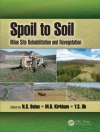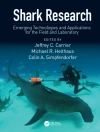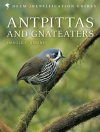(a) New Platform Technologies, (b) RNA and DNA Extraction Strategies and (c) Fiber-Optic Biosensors (a) New Platform Technologies Rapid, low-cost extraction of DNA from bacterial cultures and colonies was investigated using four reagents: Instagene matrix (Bio-Rad, Hercules, CA); Isocode paper (Schleicher and Schuell, Keene, NH); Prep Man (Applied Biosystems, Foster City, CA); and Xtra Amp tubes (Ansys Diagnostics, Lake Forest, CA). Prices per sample ranged from under 50? for Isocode paper to $1.80 for Xtra Amp. Using E. coli O157:H7 as the test organism, all methods generated PCR-quality DNA; the fastest and most user-friendly was the Xtra Amp reagent. The most versatile was the Instagene matrix, which successfully extracted DNA from other, gram-positive bacteria such as Listeria monocytogenes. The Instagene matrix also extracted DNA from lysates of Cryptosporidium parvum and Giardia lamblia. Continuous flow centrifugation (CFC) was evaluated for the recovery of C. parvum oocysts spiked into 10 L volumes of source water. The procedure took about 2.5 hours to conduct, followed by an overnight immunomagnetic separation (IMS) step using Dynal beads (Dynal, Lake Success, NY). For spiking experiments using 100 oocysts, 9 of 10 replicates were positive using immunofluorescence microscopy (IFA) with the Meri Fluor reagent (Meridian Diagnostics, Cincinnati, OH), (mean recovery of 4.4 oocysts, range 3 to 8). Another 10 replicates relied on nested PCR for the C. parvum TRAP C-1 and Cp41 genes; again, 9 of 10 replicates were positive. When the spiking dose was reduced to 10 oocysts in 10 L of raw water, 10 of 12 replicates (83%) were positive, with a mean recovery of 3.2 oocysts (range 1 – 12). Several techniques were evaluated for use in rapid extraction of RNA from a bovine cell line (MDBK cells) infected with bovine enterovirus (BEV). An automated platform for nucleic acid extraction, the ABI 6100 instrument (Applied Biosystems, Foster City, CA), did provide RT-PCR quality RNA from cells, but the yield was substantially lower than with the more labor-intensive Qiagen Viral RNA kit (Valencia, CA). The ABI 6100 was able to successfully extract DNA from bacterial cultures and colonies, as determined by PCR. Another rapid extraction method, the Xtra Amp RNA tubes, was evaluated, but as with the ABI 6100, yields of RNA were inferior compared to the Qiagen method. (b) RNA and DNA Extraction Strategies Advances in molecular methods have allowed the development of specific and sensitive high-throughput nucleic acid methods for the detection of a variety of microorganisms. While the majority of the recent advances have been in clinical microbiology, the technology is now being applied to environmental microbiology. The purpose of this study was 1) to develop standardized protocols for the rapid (less than 8 hours) quantitative PCR detection of total intact Cryptosporidium and potentially infectious enteroviruses in wastewater samples, 2) to determine the detection sensitivities of the methods using seeded wastewater samples, 3) to provide statistical evaluation for the determination of reproducibility, accuracy of quantitation, and variability of the methods, and 4) to investigate the feasibility of the developed methods using unseeded wastewater samples. Concentration methods for two different volumes of Cryptosporidium and enterovirus samples were evaluated. This allowed a comparison of the methods based on their ease of use, cost and performance. Cryptosporidium was recovered from 900-ml and 10-L water concentrates using immunomagnetic separation (IMS) with a modified dissociation. A novel method for the recovery of potentially infectious enteroviruses, referred to as host cell capture (HCC), was developed and used for analysis of 240-ml and 5-L samples. A quantitative PCR method for the detection of Cryptosporidium and enteroviruses called quantitative sequence detection (QSD) was evaluated using seeded and unseeded wastewater samples. The QSD run-to-run reproducibility, accuracy of quantitation, and variability were evaluated by seeding QSD reaction mixes with nucleic acids purified from wastewater samples, enterovirus, and Cryptosporidium. Accuracy of QSD quantitation was evaluated by seeding PCR cocktails with purified wastewater samples and DNA from 10 oocysts or RNA from 100 PFU of poliovirus. Paired unseeded samples were also assayed by QSD to evaluate detection of natural Cryptosporidium and enteroviruses. A total of 97 seeded samples were analyzed and most but not all showed some level of inhibition. For 900-ml and 10-L Cryptosporidium samples the average QSD inhibition was 87% and 80%, respectively. Despite the inhibition observed in seeded samples, 4 of 28 (14%) 900-ml and 7 of 26 (27%) 10-L unseeded samples tested positive for indigenous Cryptosporidium. Based on average inhibition from paired seeded samples, oocyst densities in unseeded samples ranged from 0.7 to 30 per reaction. Enterovirus average QSD inhibition was 10% and 85% for 240-ml and 5-L samples, respectively. 7 of 28 (25%) 240-ml and 2 of 14 (14%) 5-L unseeded samples tested positive for indigenous enteroviruses using QSD. Based on average inhibition from paired seeded samples, enterovirus densities in unseeded samples ranged from 0.1 to 13 PFU per reaction. While further refinement to reduce inhibition is desired, these data demonstrate that the application of QSD for analysis of environmental samples is promising. (c) Fiber-Optic Biosensors This study investigated the use of a commercially available fiber optic biosensor (Analyte 2000TM, Research International, Woodinville, WA) for near real-time detection of the pathogens E. coli O157:H7 and Salmonella typhimurium in wastewater. The minimum detectable number of pathogens was first measured in the relatively simple matrix of phosphate buffered saline, delivered in one-ml injections by syringe. Salmonella typhimurium could consistently be detected at 104 colony forming units (CFU) using a polyclonal antiserum directed against the O-polysaccharide. Detection of E. coli O157:H7 was more sensitive, as consistently positive results were obtained with 50-100 CFU E. coli O157:H7 using an affinity-purified, polyclonal antiserum against the O-polysaccharide. Centrifugation, filtration and delivery of a large volume (100 ml) by peristaltic pump were each tested as means of concentrating dilute suspensions of E. coli O157:H7. Delivery by peristaltic pump at the rate of 1 ml/min was the most sensitive and reproducible means of concentrating 100 ml samples. Recovery of E. coli O57:H7 colonies from the waveguides on Rainbow agar was possible after waveguides were incubated as little as 4 hours in modified LB broth. The minimum detectable number of E. coli O157:H7 cells was subsequently measured in 99 ml volumes of unprocessed (influent) wastewater that was delivered by peristaltic pump. One hundred CFU could consistently be detected by this method in either sterile or nonsterile wastewater. The specificity of the Analyte 2000TM toward E. coli O157:H7 was measured by passing pure cultures and mixed cultures of nontarget organism through the instrument. In most cases, c.106 nontarget organisms were used for these assays. False positive results were rare, even in the case of E. coli O124:H7, other E. coli strains and members of the Enterobacteriaceae. These results suggest that biosensors may be developed for use in real-time monitoring of specific analytes, such as pathogens, in wastewater treatment systems. This publication can also be purchased and downloaded via Pay Per View on Water Intelligence Online – click on the Pay Per View icon below
George Di Giovanni & Valerie J. Harwood
Overcoming Molecular Sample Processing Limitations [PDF ebook]
Overcoming Molecular Sample Processing Limitations [PDF ebook]
قم بشراء هذا الكتاب الإلكتروني واحصل على كتاب آخر مجانًا!
لغة الإنجليزية ● شكل PDF ● ISBN 9781780403151 ● الناشر IWA Publishing ● نشرت 2004 ● للتحميل 6 مرات ● دقة EUR ● هوية شخصية 5760607 ● حماية النسخ Adobe DRM
يتطلب قارئ الكتاب الاليكتروني قادرة DRM












